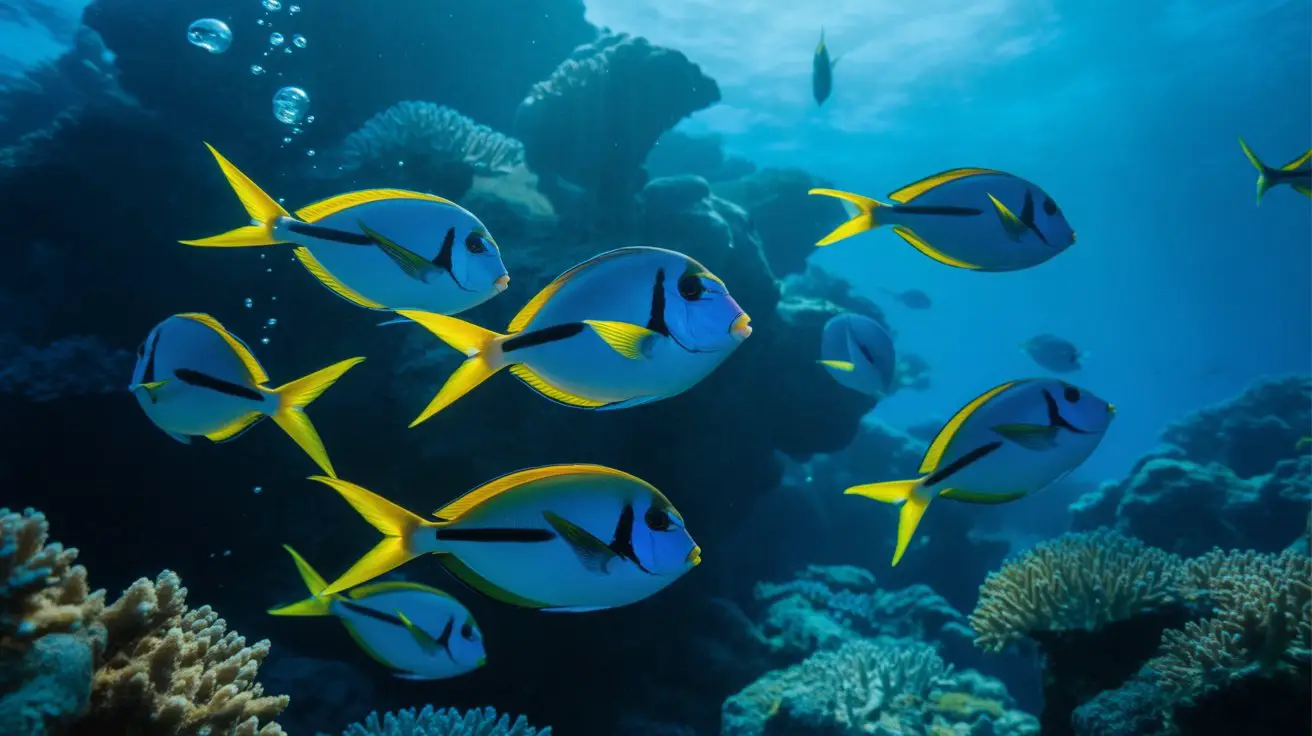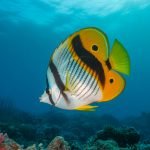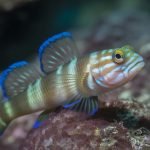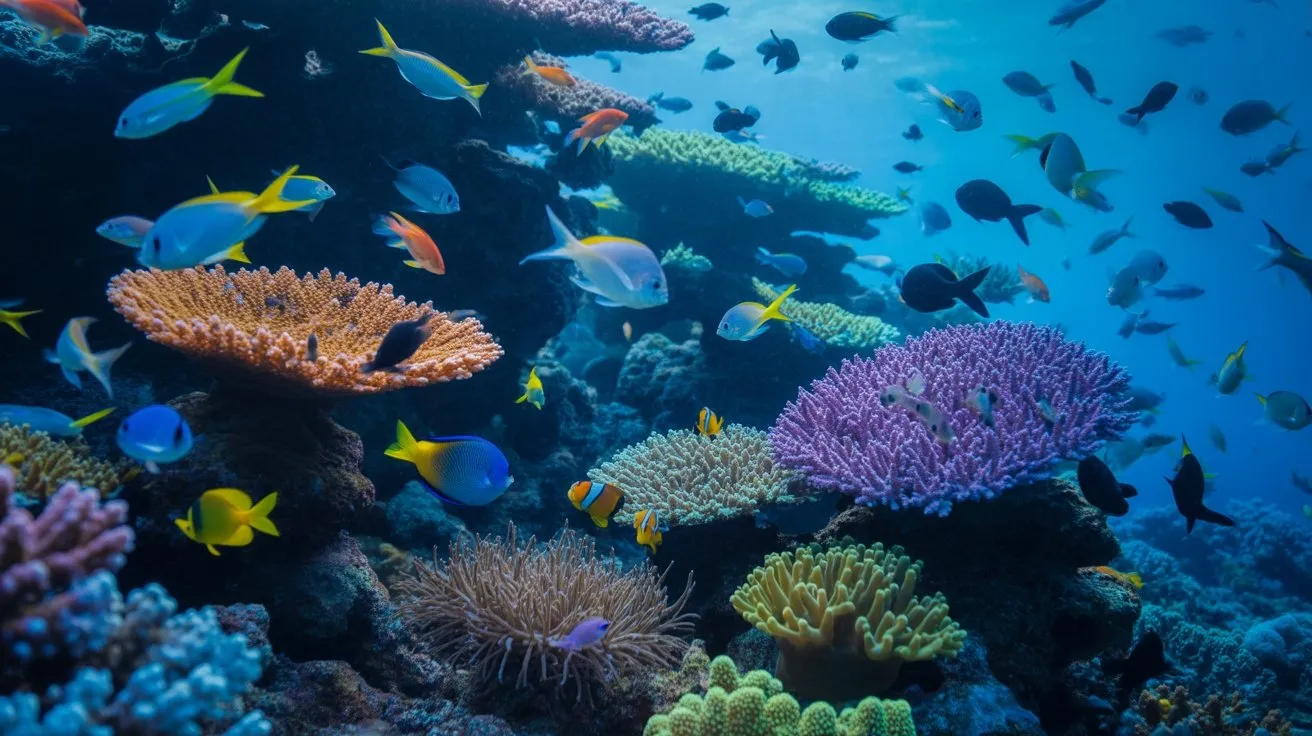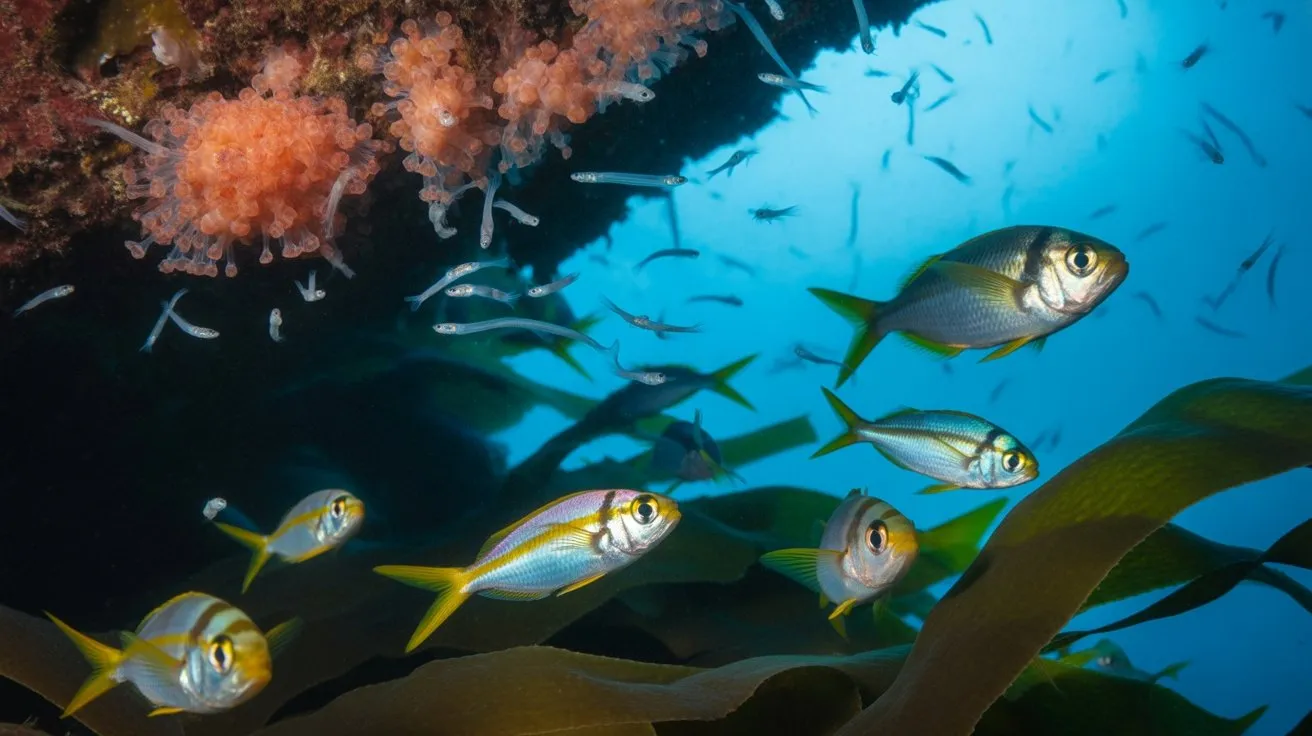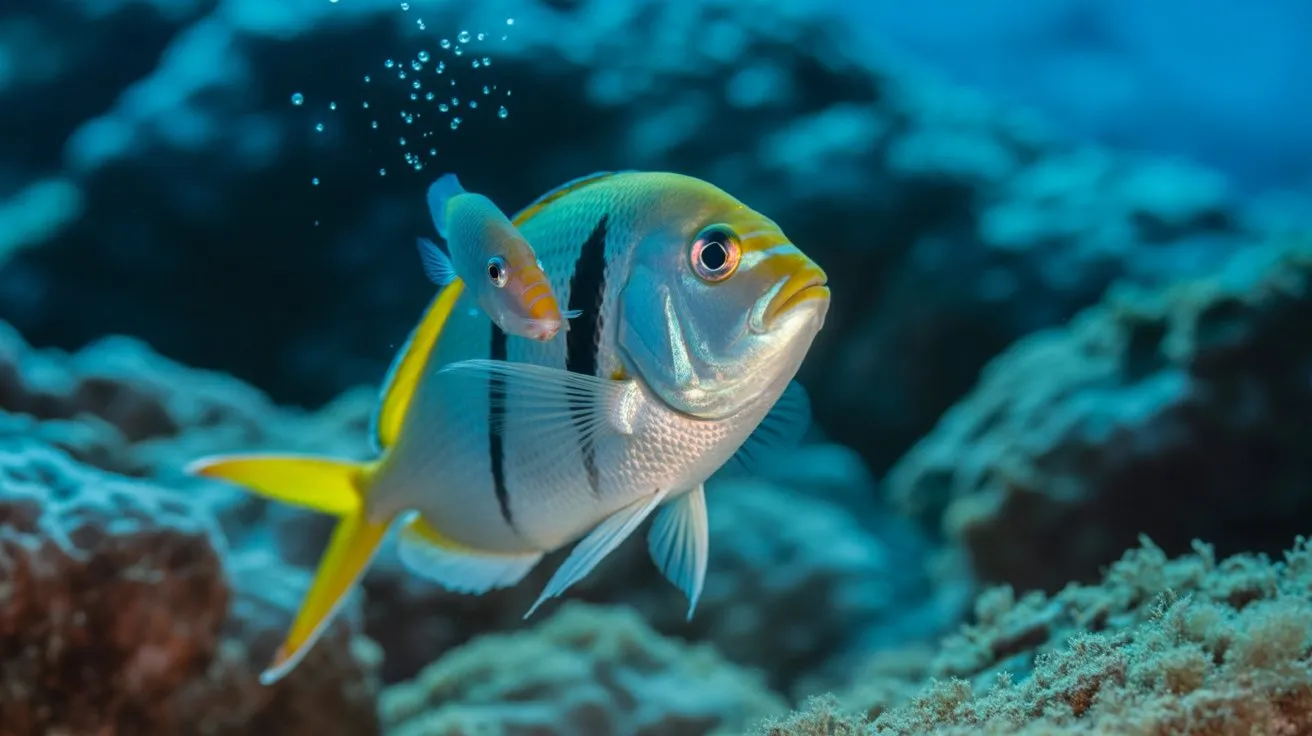You’ve probably encountered these “colorfully aggressive” marine inhabitants without realizing their taxonomic significance. Surgeonfish, including the beloved Paracanthurus hepatus that inspired Pixar’s Dory, possess retractable scalpel-like spines near their caudal peduncle—hence their clinical nomenclature. These acanthurid species demonstrate remarkable ecological specialization as primary herbivores in coral reef systems, with over 80 documented species exhibiting complex social hierarchies and territorial behaviors. What you’ll discover about their morphological adaptations challenges conventional understanding of reef fish evolution.
What Makes a Fish a Surgeonfish?
Surgeonfish earn their distinctive name from the razor-sharp, scalpel-like spines located on either side of their caudal peduncle—the narrow area where the tail fin connects to the body.
You’ll find these retractable blades, called peduncular spines, function as defensive mechanisms against predators and territorial disputes. When threatened, surgeonfish erect these spines, creating formidable weapons capable of inflicting deep lacerations.
You can identify surgeonfish by their laterally compressed, oval-shaped bodies and distinctive spine configuration. Most species possess single spines, though some genera feature multiple blades or modified spine structures.
These fish belong to the family Acanthuridae, encompassing over 80 species across six genera. Their taxonomic classification relies heavily on spine morphology, body coloration patterns, and fin ray counts, making the peduncular spines their most defining characteristic.
The Sharp Truth Behind Their Name
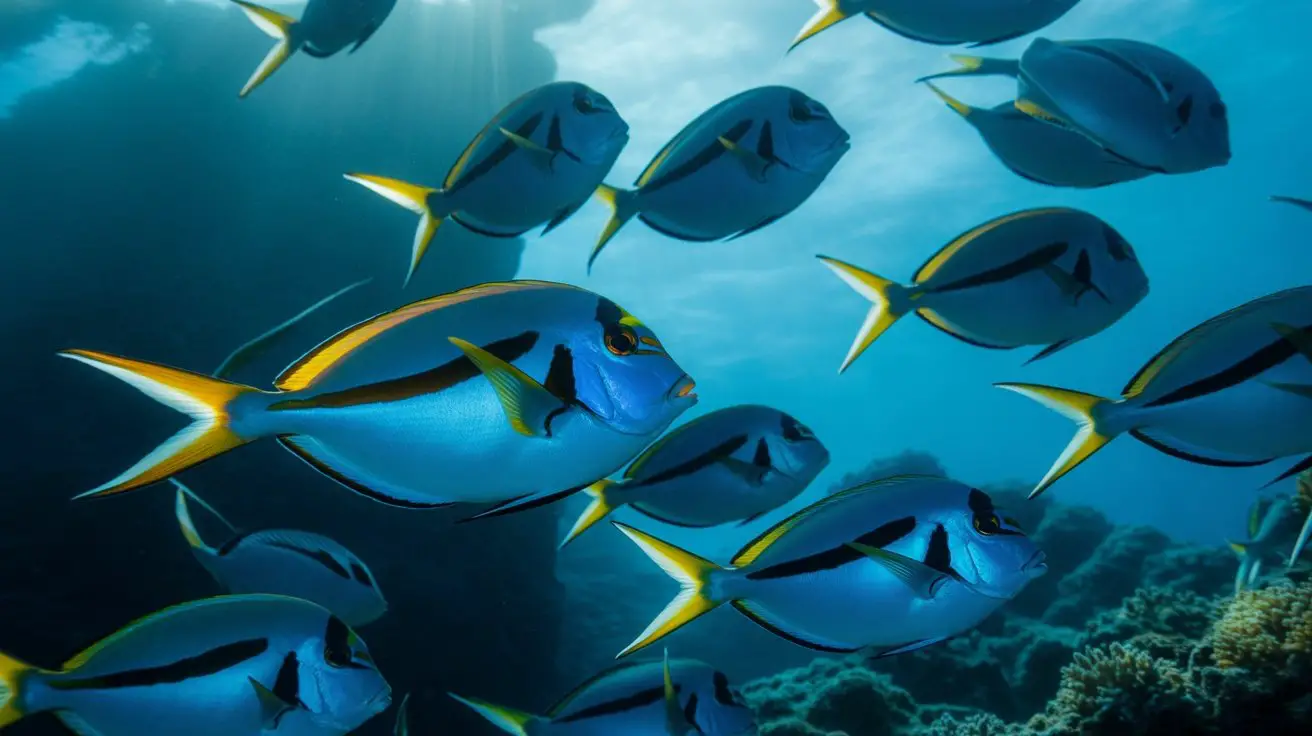
Beyond their anatomical features lies a fascinating etymology that reveals how these remarkable blades earned surgeonfish their medical moniker.
You’ll discover that early marine biologists drew direct parallels between the fish’s razor-sharp caudal spines and surgical instruments used in 18th-century medicine.
The comparison isn’t merely superficial.
Consider these striking similarities:
- Precision cutting capability – Both surgical scalpels and surgeonfish spines create clean, precise incisions
- Retractable mechanism – The spines fold against the body like collapsible surgical tools
- Sterile sharpness – Natural antibacterial properties prevent infection at wound sites
- Defensive deployment – Quick, controlled movements mirror surgical technique
You’re observing millions of years of evolutionary refinement that produced nature’s own surgical instruments.
These specialized structures can inflict wounds requiring actual medical attention, making their nomenclature remarkably prescient.
Where to Find Surgeonfish in the Wild
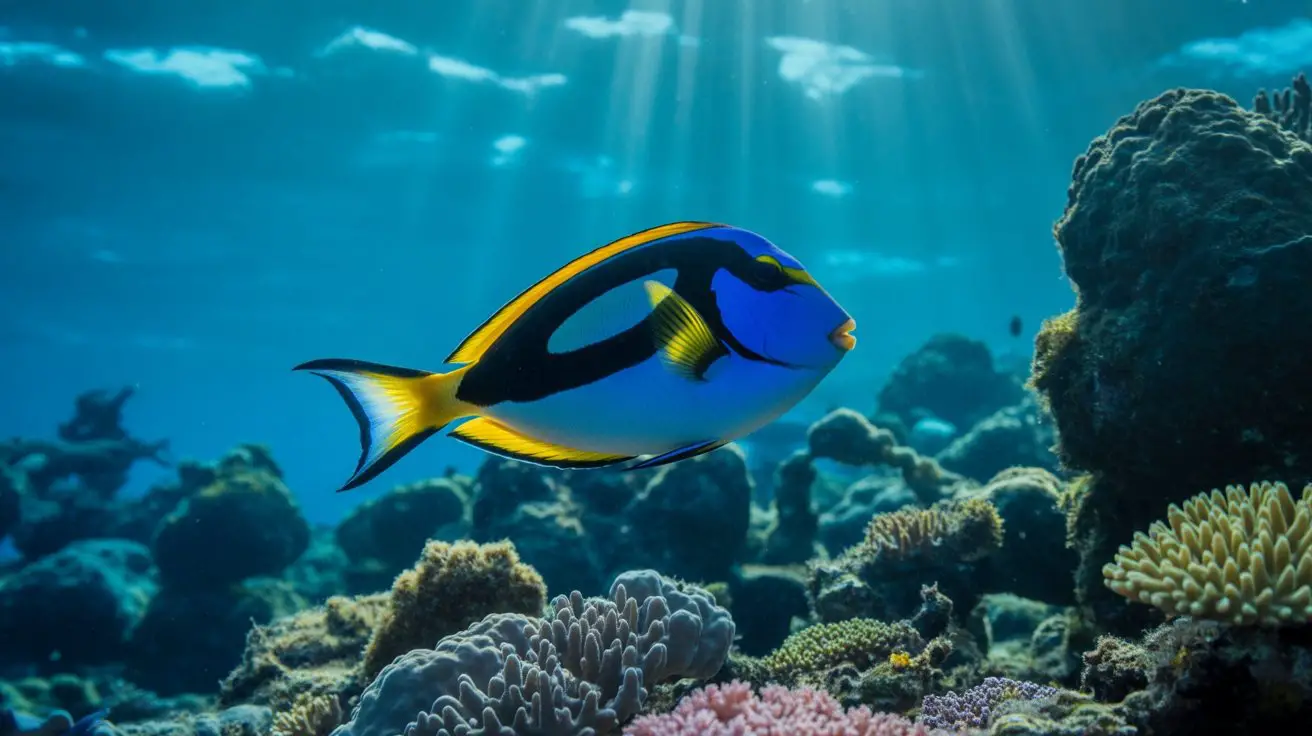
While these natural scalpel-bearers inhabit tropical and subtropical waters worldwide, you’ll encounter the greatest diversity of surgeonfish species throughout the Indo-Pacific region.
You’ll find them concentrated around coral reefs, rocky coastlines, and shallow lagoons from the Red Sea to Hawaii, with over 80 species documented in this biogeographic zone.
If you’re exploring the Atlantic, you’ll spot fewer species—primarily the ocean surgeonfish, doctorfish, and blue tang.
The Caribbean hosts approximately six species, while the eastern Atlantic contains even fewer representatives.
You’ll observe surgeonfish at depths ranging from shallow tide pools to 130 feet, though most species prefer depths between 10-60 feet.
They’re particularly abundant near reef edges where algal growth flourishes, providing their primary food source. This abundance is crucial as surgeonfish play a key role in maintaining coral reef health by controlling macroalgae growth that competes with corals.
Popular Species and Their Unique Characteristics
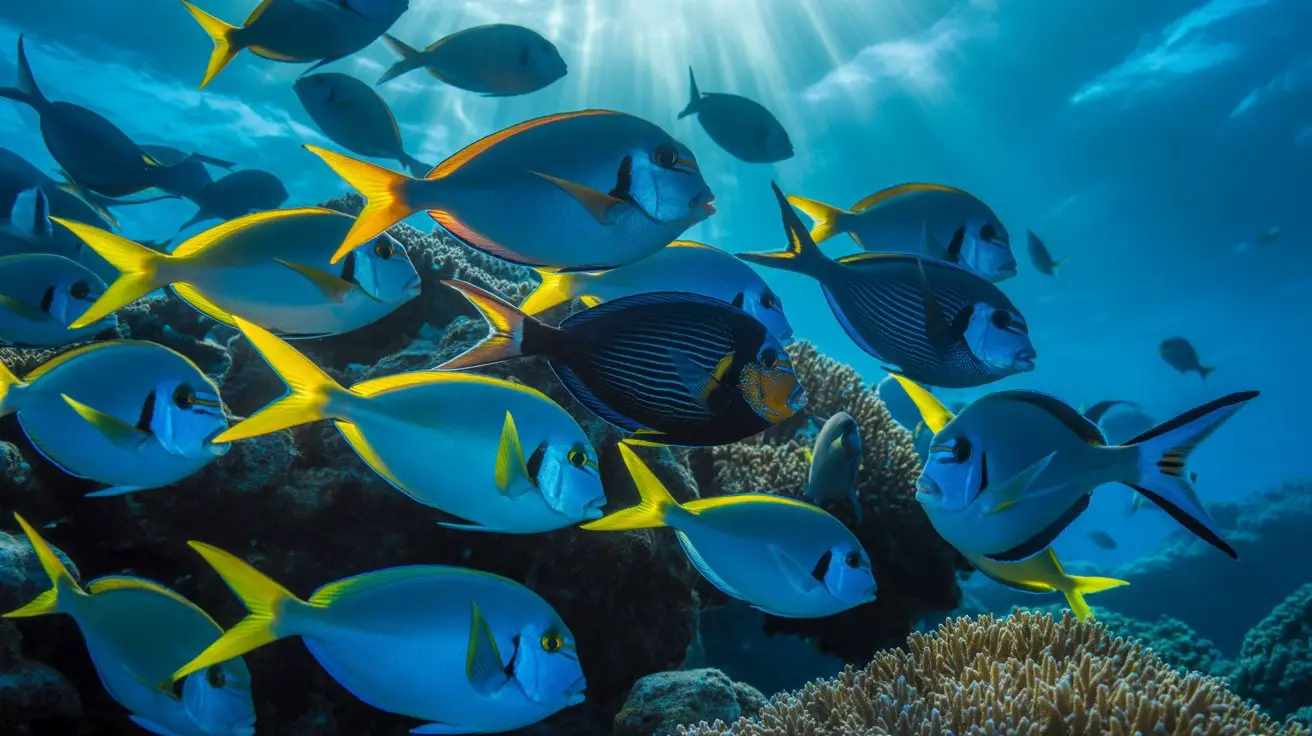
Among the dozens of surgeonfish species you’ll encounter, several stand out for their distinctive features and ecological significance.
These remarkable fish demonstrate evolutionary adaptations that’ve enabled their success across diverse marine environments.
Notable species include:
- Blue Tang (Paracanthurus hepatus): Features vibrant blue coloration with black patterns and serves as a primary algae consumer on Indo-Pacific reefs.
- Yellow Tang (Zebrasoma flavescens): Exhibits bright yellow pigmentation and territorial behavior, endemic to Hawaiian waters.
- Powder Blue Tang (Paracanthurus hepatus): Displays striking blue and white contrast with aggressive feeding patterns.
- Convict Tang (Acanthurus triostegus): Shows distinctive vertical black stripes and schooling behavior in shallow lagoons.
You’ll find these species demonstrate specialized feeding mechanisms, complex social hierarchies, and critical ecosystem roles as herbivorous grazers maintaining coral reef health. Additionally, their vibrant colors and patterns not only enhance the visual appeal of reefs but also reflect evolutionary adaptations that help them thrive in their environments.
The Algae-Eating Champions of Coral Reefs
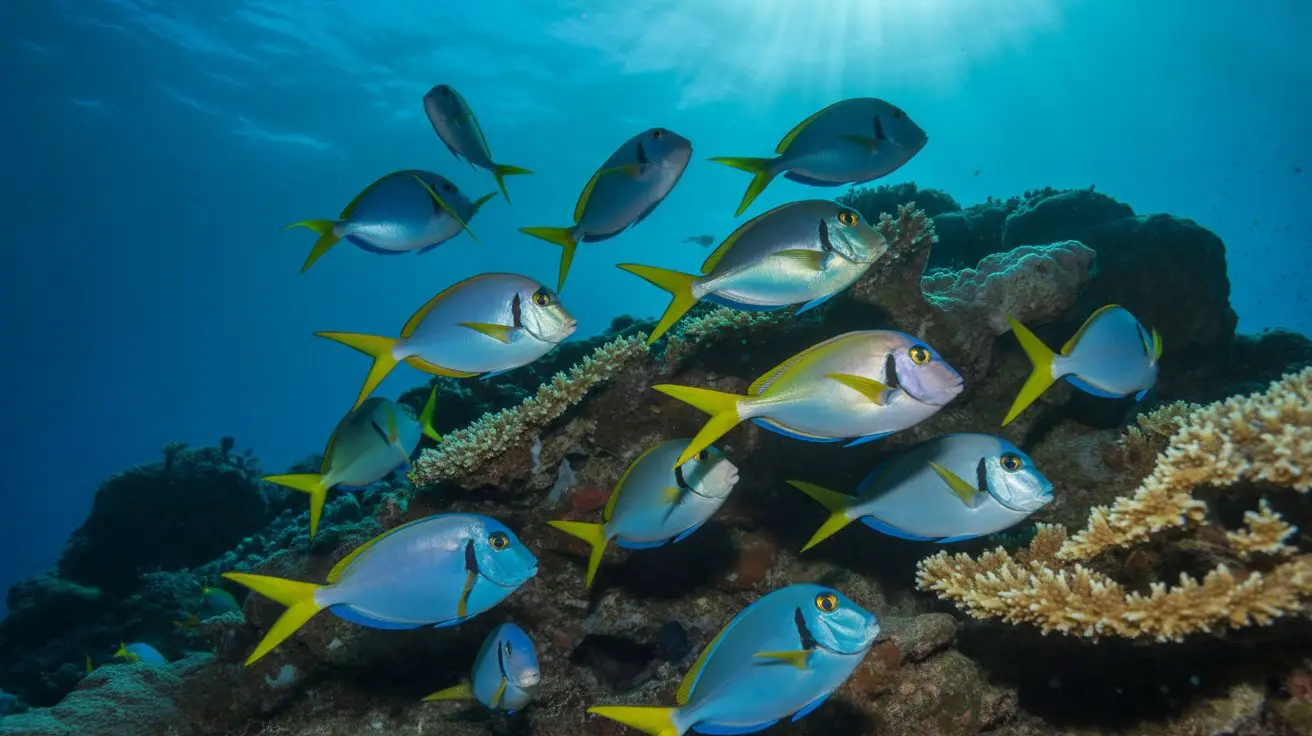
As coral reefs face increasing environmental pressures, surgeonfish function as essential ecosystem engineers through their intensive algae consumption, processing up to 40% of algal production on healthy reef systems.
You’ll observe these herbivores maintaining critical algal biomass balance, preventing macroalgae from outcompeting corals for space and light. Their specialized pharyngeal mills crush tough algal cell walls, while their digestive systems extract nutrients efficiently through extended gut transit times.
Surgeonfish grazing creates distinct halos around reef structures, facilitating coral recruitment by clearing settlement surfaces. Their selective feeding removes fast-growing filamentous algae while preserving crustose coralline algae essential for coral larval attachment.
Without adequate surgeonfish populations, you’ll witness phase shifts from coral-dominated to algae-dominated ecosystems, dramatically reducing reef biodiversity and structural complexity. This imbalance can lead to excessive predation on corals by other organisms, further exacerbating the decline of reef health.
Dory’s Real-Life Relatives: Blue Tang Facts
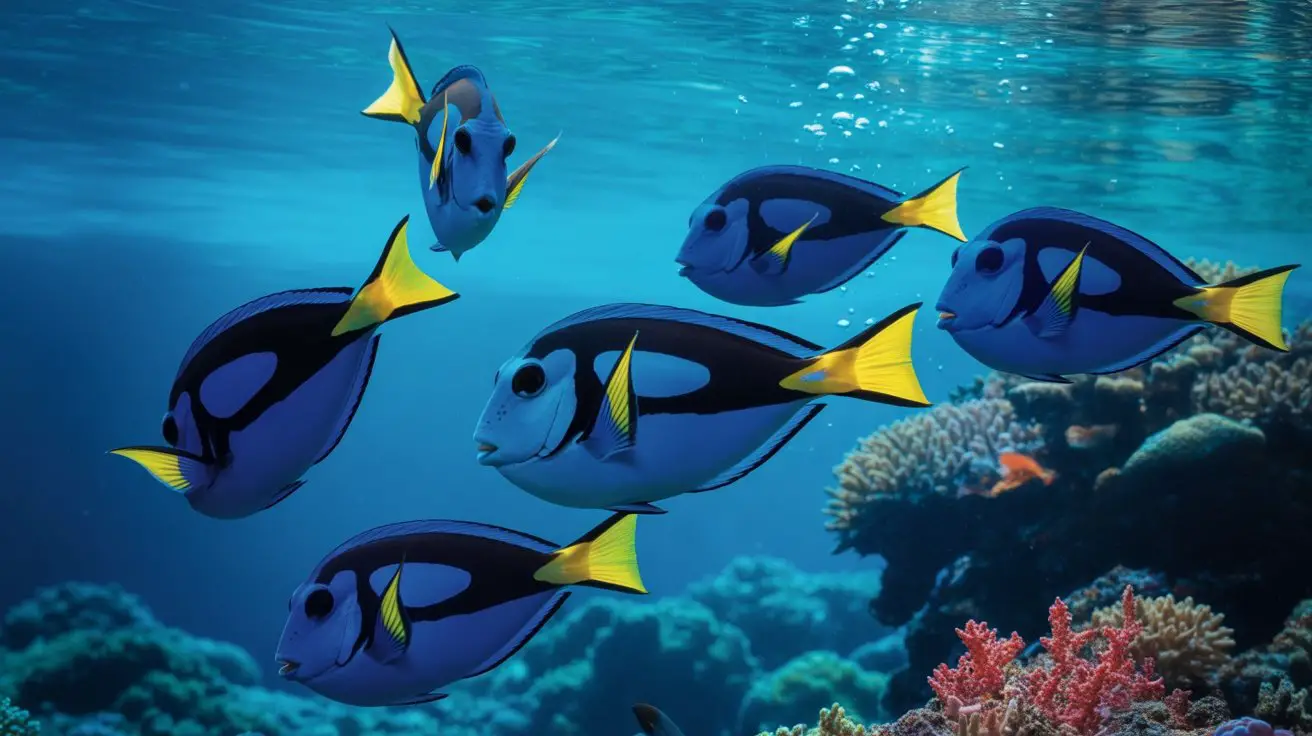
The vibrant blue tang that inspired Pixar’s beloved Dory belongs to the species Paracanthurus hepatus, a surgeonfish whose electric blue coloration and distinctive black patterns make it one of the ocean’s most recognizable reef inhabitants.
You’ll find these fish throughout Indo-Pacific coral reefs, where they’ve evolved sophisticated social behaviors and feeding strategies.
Blue tangs exhibit remarkable characteristics that distinguish them from other surgeonfish:
- Memory capabilities: Contrary to Dory’s fictional amnesia, blue tangs possess excellent spatial memory for steering through complex reef environments.
- Schooling behavior: They form large aggregations of hundreds of individuals during feeding migrations.
- Toxicity defense: Their mucus contains ciguatoxin, making them potentially dangerous if consumed.
- Size variation: Adults reach 30 centimeters, considerably larger than most aquarium specimens you’ve encountered.
- Habitat significance: Their presence contributes to the health of coral reef ecosystems, as they help maintain algal growth and prevent overgrowth that can harm coral.
Behavior and Social Structure in the Ocean
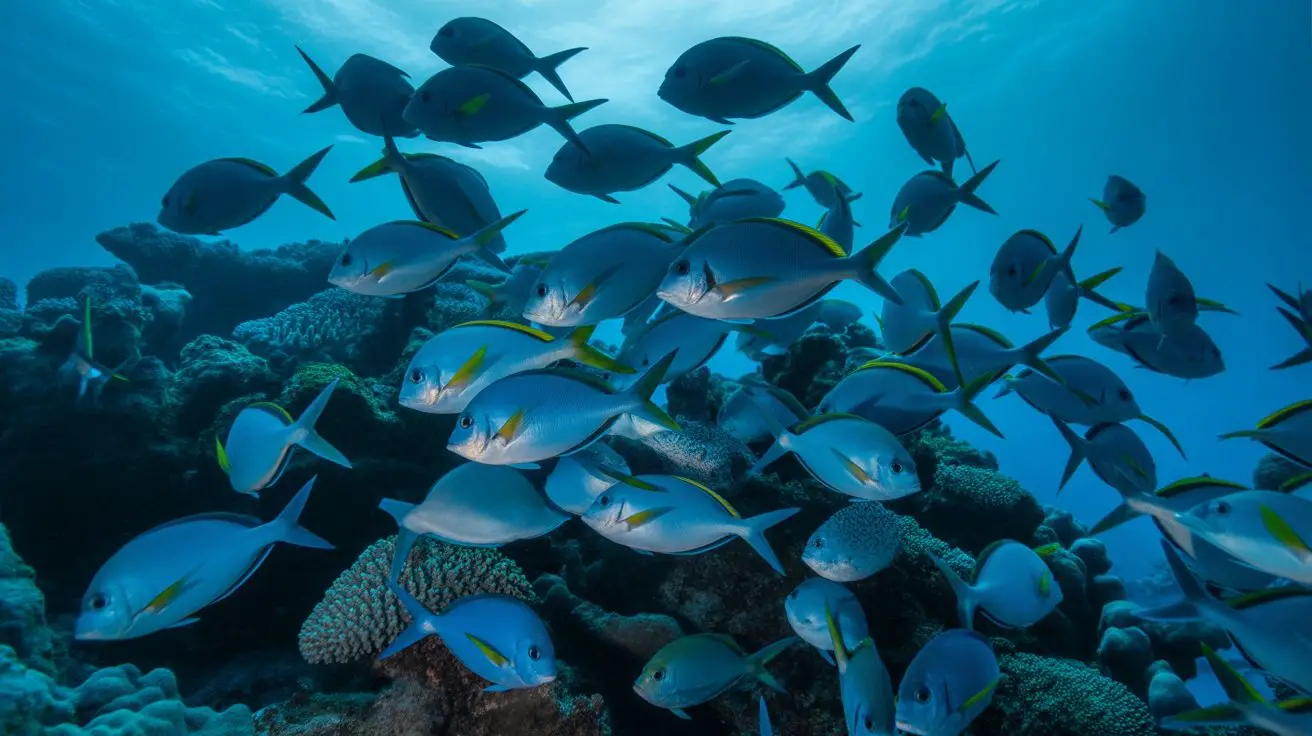
Blue tangs’ schooling tendencies represent just one facet of surgeonfish behavioral complexity that varies dramatically across species and ecological contexts.
You’ll observe that juvenile surgeonfish typically aggregate in large, mixed-species schools for predator protection, while adults often establish territorial boundaries around preferred feeding sites.
Adults defend prime algal territories using aggressive displays and their scalpel-like caudal spines as deterrents. Some species exhibit cleaning behaviors, removing parasites from larger fish at established cleaning stations.
Social hierarchies emerge within territorial species, with dominant individuals occupying ideal foraging areas.
During spawning seasons, you’ll witness remarkable mass aggregations where hundreds of individuals synchronize reproductive activities.
These behavioral adaptations guarantee feeding efficiency, predator avoidance, and reproductive success across diverse reef environments. Additionally, surgeonfish play a crucial role in maintaining the balance of prey populations by grazing on algae, which helps prevent overgrowth and supports the health of coral reefs.
Keeping Surgeonfish in Home Aquariums
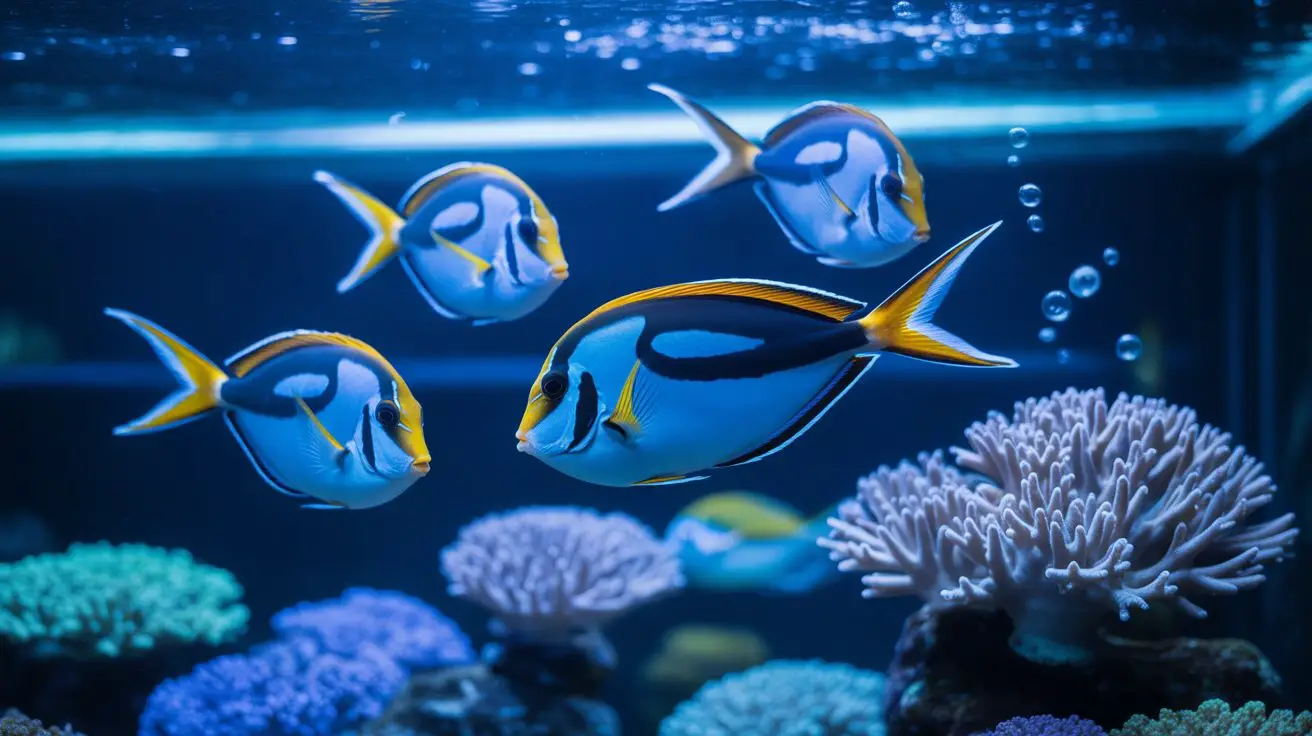
Why do surgeonfish captivate marine aquarists despite their demanding care requirements? You’re drawn to their vibrant coloration and dynamic swimming patterns, but you’ll need substantial expertise to maintain these tangs successfully.
They require large aquarium volumes due to their territorial nature and high metabolic rates.
Essential requirements for surgeonfish husbandry include:
- Minimum 75-gallon tank capacity with extensive swimming space
- Pristine water quality with nitrates below 20 ppm
- Varied herbivorous diet including marine algae and vegetable matter
- Stable temperature range between 72-78°F with consistent salinity
You must provide adequate protein skimming and frequent water changes to manage their bioload effectively.
Most species exhibit aggressive territoriality toward conspecifics, requiring careful tank mate selection. Their susceptibility to marine ich necessitates quarantine protocols before introduction.
Conservation Status and Threats They Face
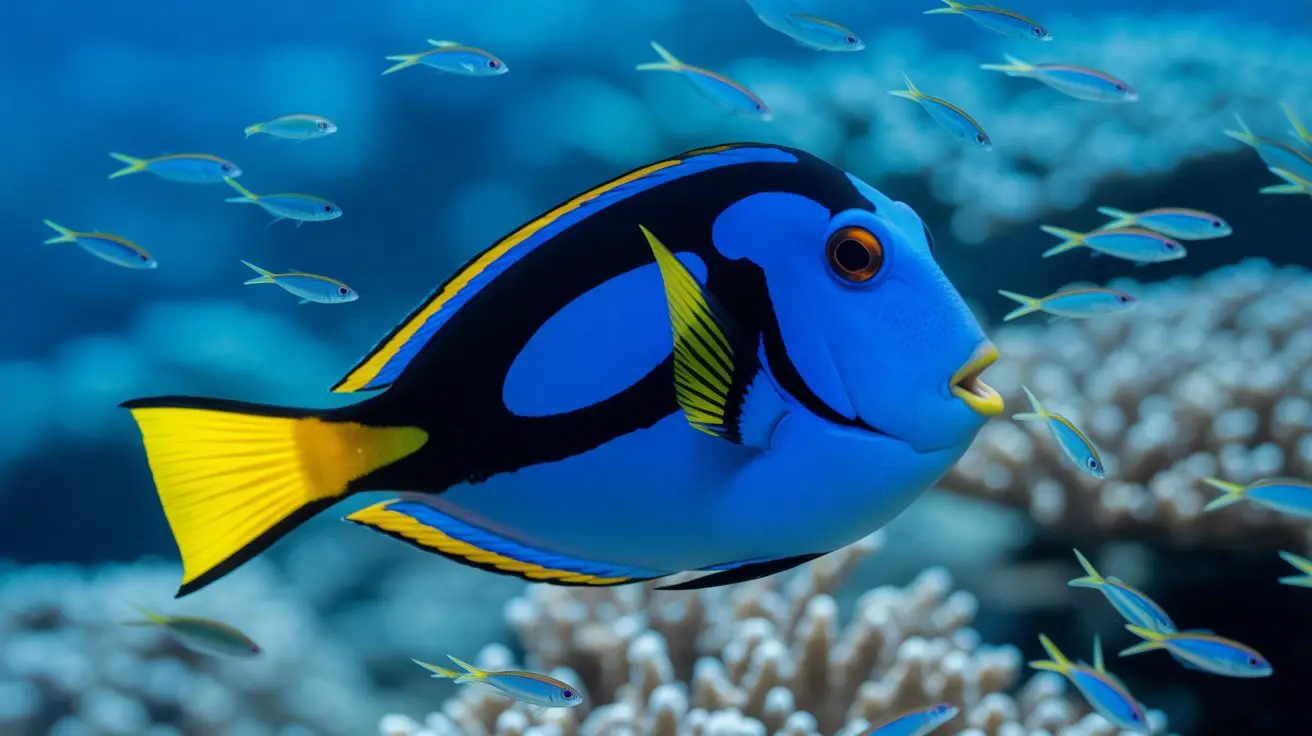
Although surgeonfish populations remain relatively stable across most species, you’ll find that mounting anthropogenic pressures threaten their long-term viability throughout tropical reef ecosystems.
Climate change causes coral bleaching events that eliminate essential habitat and feeding grounds. Ocean acidification reduces carbonate availability, compromising reef structure integrity. Overfishing depletes surgeonfish stocks while simultaneously removing predators, disrupting trophic cascades.
You’ll observe habitat destruction through coastal development, pollution, and destructive fishing practices fragmenting reef systems. Marine aquarium trade pressure targets juvenile specimens, reducing recruitment potential. Invasive species compete for resources and alter community dynamics.
Most surgeonfish species aren’t currently listed under IUCN Red List criteria, but localized population declines occur throughout their range. Overfishing threatens species survival and highlights the urgent need for conservation efforts.
Enhanced marine protected areas, sustainable fishing quotas, and climate change mitigation represent critical conservation strategies.
Best Diving and Snorkeling Spots to See Them
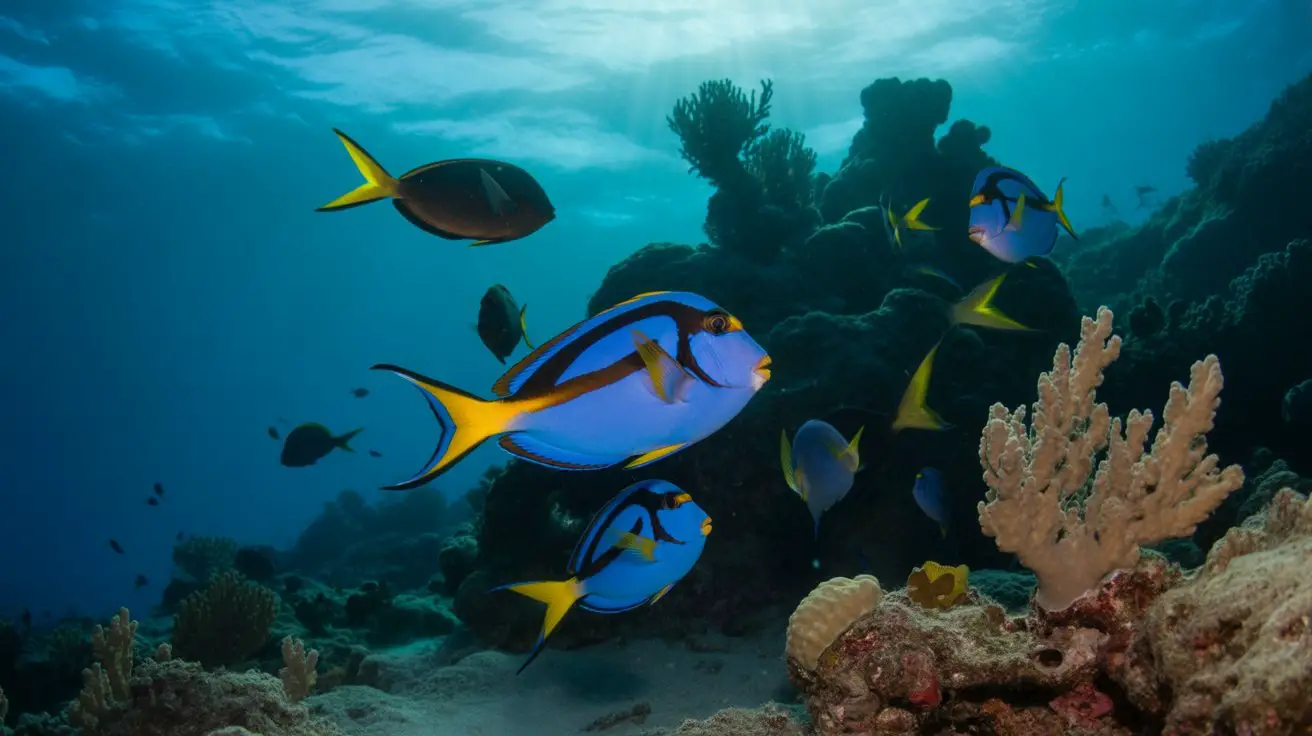
When you’re planning underwater encounters with surgeonfish, you’ll find the Indo-Pacific’s coral triangle offers the highest species diversity and abundance. This biogeographic region encompasses Indonesia, Malaysia, Philippines, Papua New Guinea, Timor-Leste, and the Solomon Islands, hosting over 75% of known coral species and exceptional surgeonfish populations.
Prime locations for surgeonfish observation include:
- Great Barrier Reef, Australia – Home to 18+ species including powder blue tangs and yellow tangs
- Maldives atolls – Abundant populations of blue tangs and unicornfish in pristine coral gardens
- Red Sea, Egypt – Sohal surgeonfish and Arabian tangs thrive in nutrient-rich waters
- Hawaiian Islands – Endemic species like yellow tangs concentrate in Hanauma Bay and Molokini Crater
You’ll encounter the greatest diversity at depths between 3-30 meters on healthy coral reefs. Additionally, the Great Barrier Reef is critically threatened by rising ocean temperatures, making it vital to prioritize conservation efforts while snorkeling.
Conclusion
You’ve discovered surgeonfish aren’t just animated movie stars—they’re sophisticated biological machines wielding razor-sharp scalpel spines while gracefully maintaining coral reef ecosystems. Where Hollywood created fictional personalities, nature engineered precise algae-harvesting specialists with complex territorial behaviors and intricate social hierarchies. You’ll find these vibrant creatures thriving in pristine tropical waters, yet facing mounting anthropogenic pressures. Their dual existence as beloved aquarium specimens and critical keystone species demonstrates marine biodiversity’s delicate balance between human fascination and ecological necessity.
